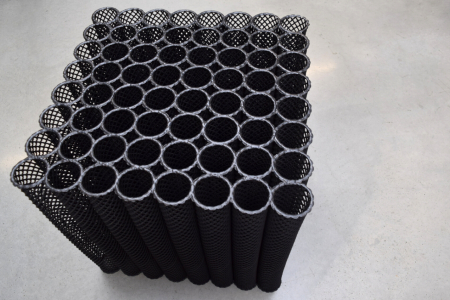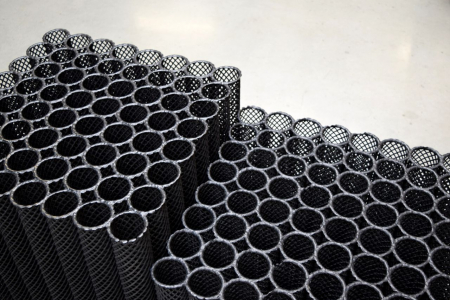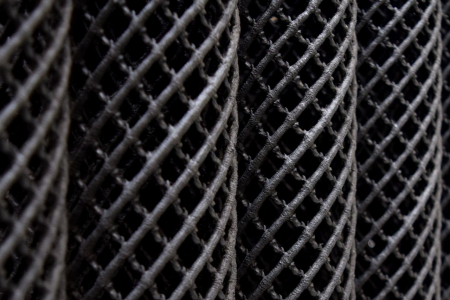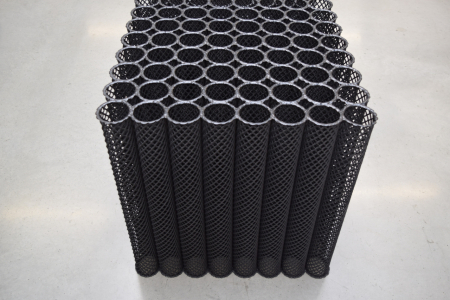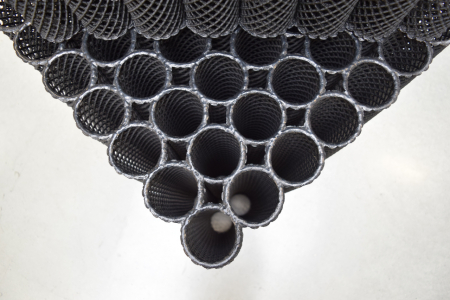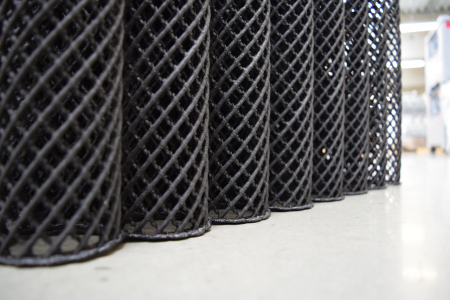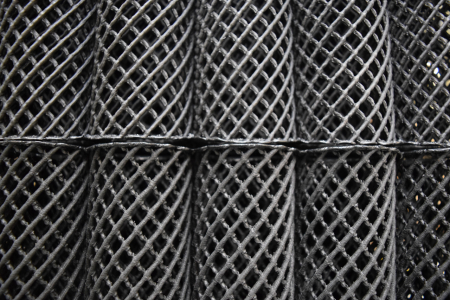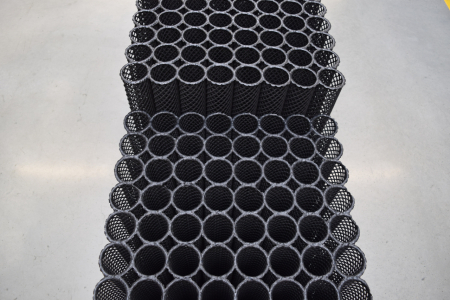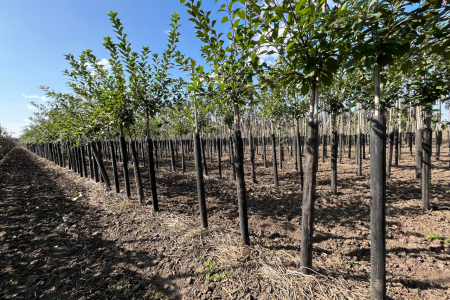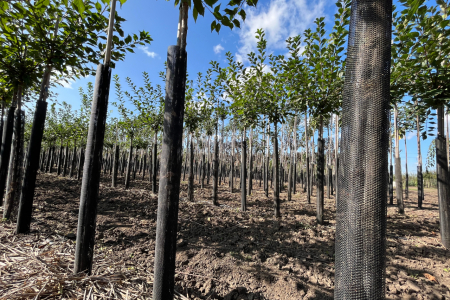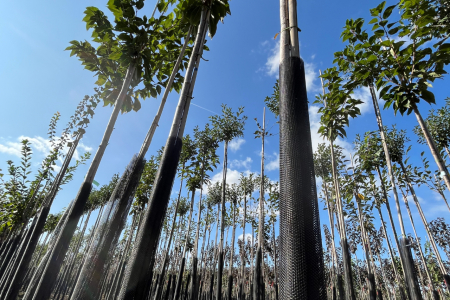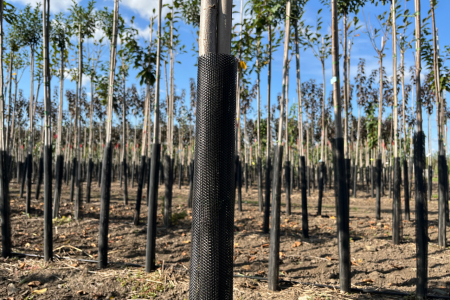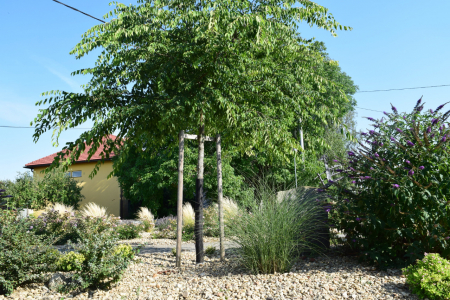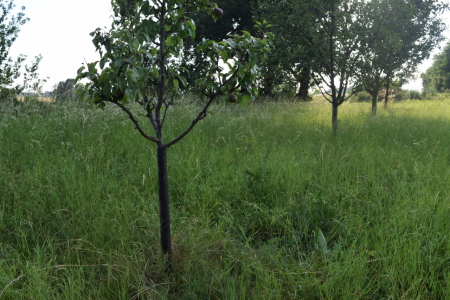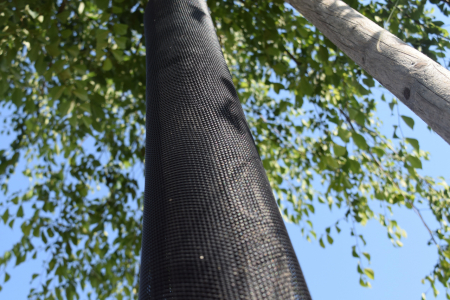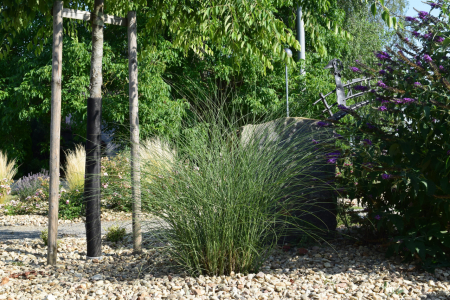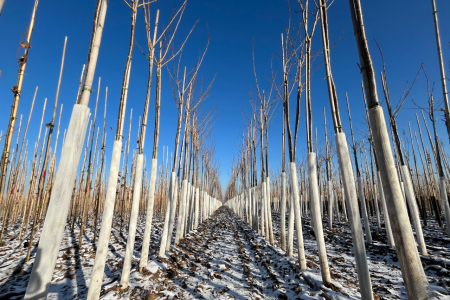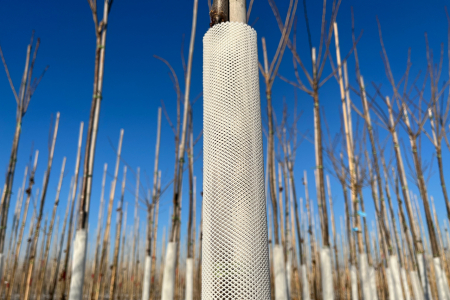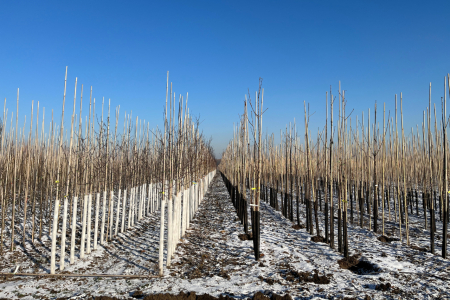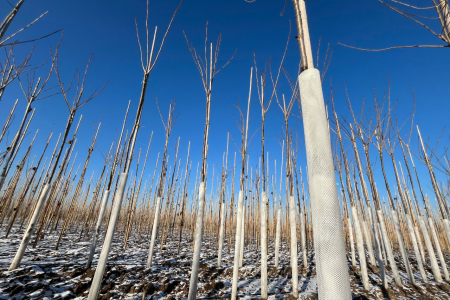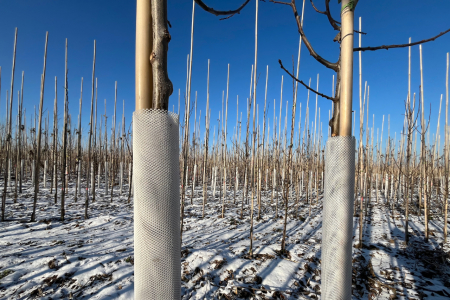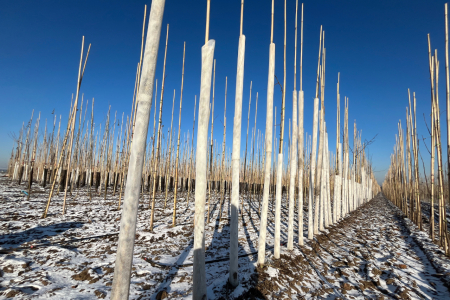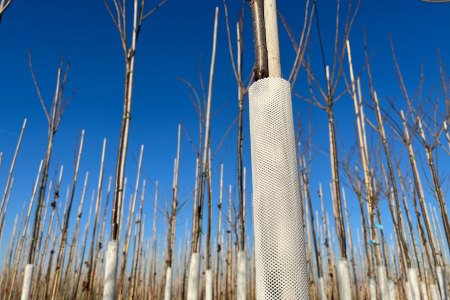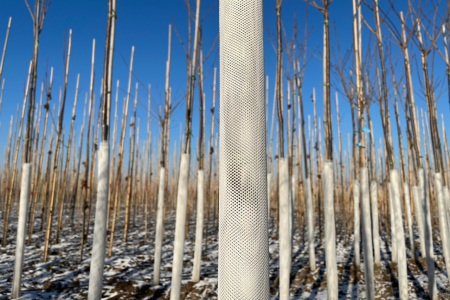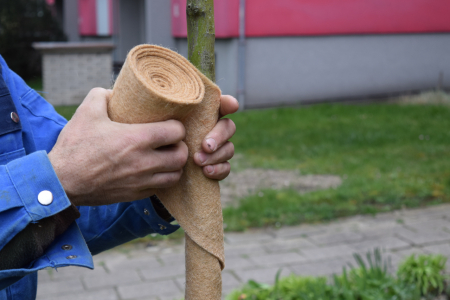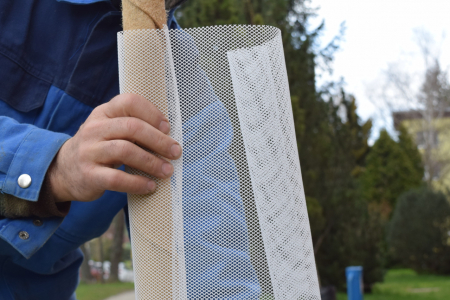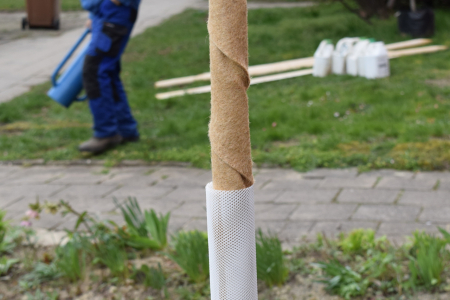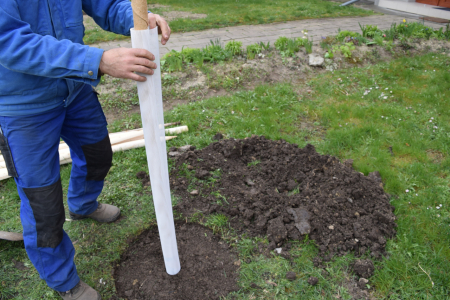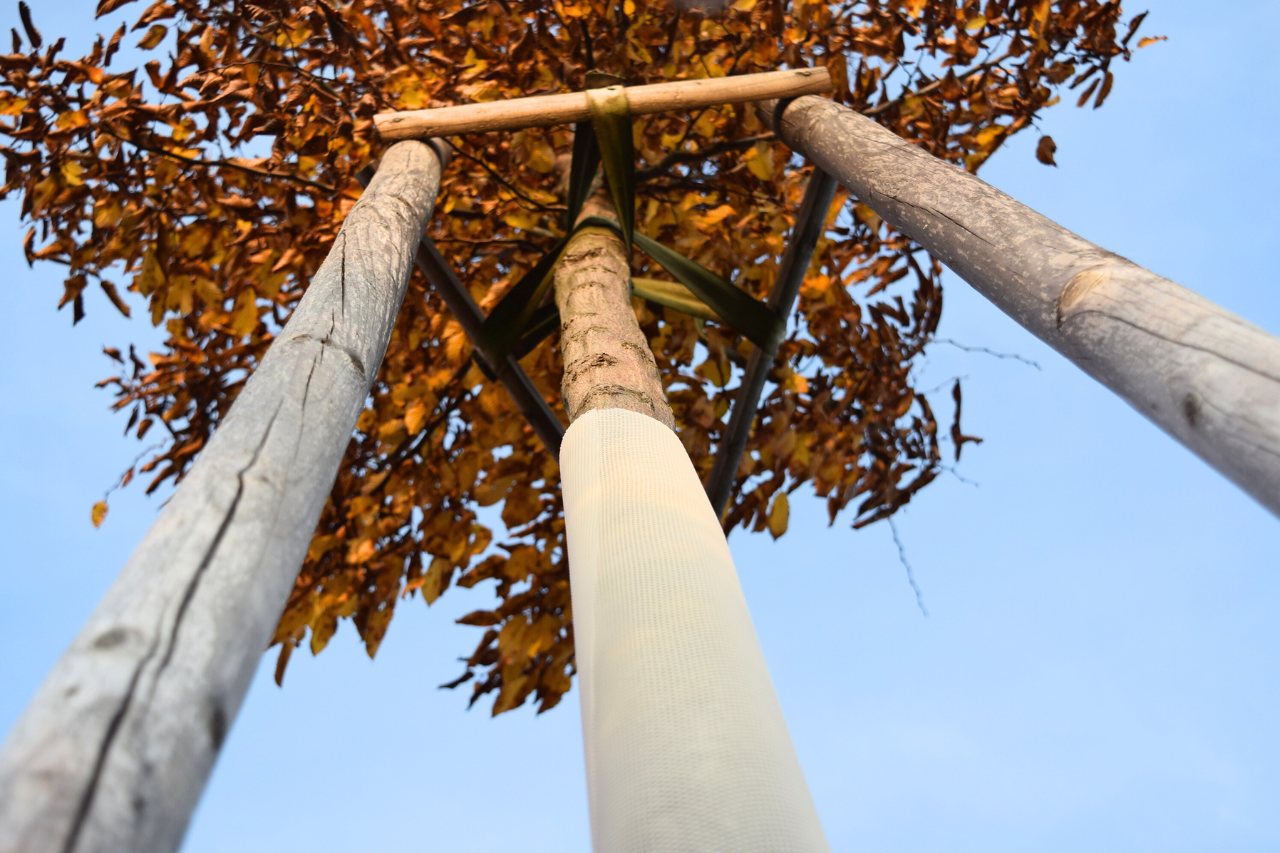
1. The Right Pit: Digging the Hole for Healthy Tree Growth
When planting a tree, the hole doesn't need to be excessively deep. Measure the height of the root ball of the tree you've purchased — the hole should match this height. However, the width should be two to three times greater than the root ball.
As you dig, separate the top and bottom layers of soil to avoid mixing them. It's also important to water both the walls and the bottom of the pit before planting.
2. Tree Irrigation: Keep Your Young Trees Watered
Consider irrigation right from the start. Heavy rainfalls thatrun off quickly are increasingly common. Combined with longer dry spells, your young tree will require watering during its first few years.
A reliable solution for maintaining soil moisture is the BIO-BLOK®. This device consists of mesh tubes with a unique porous fibre surface, wrapped in geotextile fabric to prevent soil penetration. One of its key uses is irrigation.
To use BIO-BLOK® for tree planting, bury it beside the tree (but not underneath). A small pipe, available from building supply stores, connects the BIO-BLOK® to the surface. You simply pour water into the pipe, allowing it to reach the roots directly without runoff.
This method also prevents evaporation. If you were to water the tree from above, some of the moisture would evaporate in the heat and never reach the roots. This is not the case with BIO-BLOK®.
The BIO-BLOK® measures 54 × 54 × 55 cm. If needed, you can cut it in half and place each section on either side of the tree.
3. Tree Root Protection: How to Install Anti-Root Film
Tree roots have tremendous strength — they can erode the surface of a road or pavement. Their roots lift the concrete from underneath, causing it to bend and sometimes even crack.
If there is a walkway, patio, pond, or another object within a few metres of the tree that could be damaged by the roots over time, install an anti-root film.
It acts as a barrier that is several tens of centimetres high. Bury the entire sheet vertically in the area you want to protect. The sheeting forms a "wall" that roots cannot grow through. Instead, the roots curl downward. Once they pass the barrier, they continue to grow sideways, but at a greater depth — with zero risk of lifting the pavement.
You can install the anti-root film on one side when digging the hole, or it can be placed in a circle around the entire tree. Just ensure there is sufficient space between the film and the trunk — a narrow "tube" could potentially sabotage the tree growth.
4. How to Plant a Tree Properly
Unpack the root ball from its packaging and place the tree in the hole. Be careful not to plant the tree too deep — the root collar, where the trunk meets the roots, should remain above the soil level.
Before covering the hole with soil, water the tree thoroughly. This allows water to reach the lower roots without having to pass through the upper soil layers. You may also place stakes in the hole and anchor the tree to them to prevent it from being blown over by strong winds.
Once watered, refill the hole with soil, starting with the bottom soil and then adding the top soil to maintain the original soil structure.
Finally, level the surface, but do not compact it too much (e.g. by treading on it), as the water will be harder to absorb.
5. Mulching Reduces Weeds and Saves Water
To reduce weed growth around your tree, consider mulching. Start by laying a sheet of jute felt around the base of the tree. This is a strong natural fabric that helps suppress weeds. Then, cover the felt with mulch, such as bark.
Mulching will make maintenance easier and it also reduces water evaporation, keeping the soil moist.
6. Pruning Trees for Stronger Branches
Once the tree is planted, check its crown. If any branches are competing with the terminal (the main upward facing branch), remove them. Also, prune away damaged branches or those growing too closely together.
7. Tree Bite Protection
If your tree is on open land, consider using a tree trunk protector. Wildlife can easily damage the bark, and the tree may not survive such a hit.
When choosing a tree protector, consider the following:
- The current height of the tree.
- The anticipated diameter of the trunk by the time the tree protector is needed.
For more information, see the article Best Protection Against Animal Damage: Plastic Mesh Tree Trunk Guards.
8. Frost Protection for Trees
Don’t forget to protect trees from frost. If temperatures unexpectedly go up for a few days during winter or spring, sap may begin to flow. However, when temperatures drop again at night, the sap can freeze, causing the bark to crack.
One solution is to use white trunk protectors. As mentioned earlier, they protect against animal bites, but the white version also helps prevent the bark from cracking. The white colour reflects sunlight, preventing the trunk from overheating, which reduces the risk of the tree prematurely waking from dormancy.
For more details, see the article Fighting Off Winter Damage: White Tree Guards.
9. Shielding Trees from Wind Drying
When large growers prepare trees for sale, they often trim a part of the roots to ease transportation. This reduces the tree's ability to absorb moisture.
To manage water efficiently during autumn and winter, newly planted trees which have less extensive root systems are wrapped in jute fabric. This helps protect the trunk from drying out due to cold winds, which can make young trees more vulnerable.
10. Anchoring the Tree
Once the trunk is protected, tie the tree to stakes to enhance stability and prevent it from toppling over. Proper anchoring ensures that young trees remain upright and secure as they establish themselves.
Picking the Right Tree
Successful planting also depends on selecting the right tree for your site. Choosing a tree that doesn’t match the soil conditions or environment can hinder its growth. Always research the tree’s requirements or consult with a garden centre to ensure it will thrive in your conditions.
Essential Tree Planting Aids and Supplies
Most of the mentioned products for tree planting can be found at garden shops. BIO-BLOK® is not commonly available in stores but can be ordered online from the Fortel online store.
For bulk buyers, we offer a range of products including:
- BIO-BLOK®,
- Anti-root film,
- Trunk protectors,
- Jute felt,
- Jute fabric.
We also provide customised smaller packages for individual consumers and label the products with your own branding.
